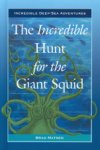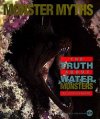Fishing for Giant Squid Additional Information
Share this:
- Share via email (Opens in new window) Email
- Click to share on Facebook (Opens in new window) Facebook
- Click to share on X (Opens in new window) X
- Click to share on Pinterest (Opens in new window) Pinterest
- Click to share on Reddit (Opens in new window) Reddit
- Share to Google Classroom (Opens in new window) Google Classroom
- Click to print (Opens in new window) Print
You can learn more about the giant squid at seawifs.gsfc.nasa.gov/OCEAN_PLANET/HTML/squid_move.html (NASA/Smithsonian), en.wikipedia.org/wiki/Giant_squid (Wikipedia), and www.tonmo.com/science/public/giantsquidfacts.php (The Octopus News Magazine Online).
A scientist’s diary of a search for sperm whales and giant squid can be found at www.pbs.org/odyssey/odyssey/20020630_log_transcript.html (PBS).
Clyde Roper’s search for giant squid is documented at www.smithsonianmag.si.edu/smithsonian/issues05/nov05/35_roper.html and www.smithsonianmag.si.edu/smithsonian/issues96/may96/squid.html (Smithsonian Magazine).
Sohn, Emily. 2004. Explorer of the extreme deep. Science News for Kids (Nov. 10). Available at http://www.sciencenewsforkids.org/articles/20041110/Feature1.asp.
Books recommended by SearchIt!Science:
 |
The Incredible Hunt for the Giant Squid— Brad Matsen
Published by Enslow Publishers, 2003.
How can you study a creature that’s never been seen alive? It hasn’t been easy, but scientists have managed to learn some information about the giant squid, which has not yet been found alive in the ocean. Meet Clyde Roper, a giant squid hunter who is an expert on this mysterious creature, and find out what he has learned on his deep-sea dives. With color photos and illustrations, this book offers knowledge about squid in general and discusses other surprising ocean finds, such as the coelacanth, the oarfish, and the rare megamouth shark. |
 |
Outside and Inside Giant Squid— Sandra Markle
Published by Walker & Co., 2003.
For more than a century, people have been finding giant squid bodies washed up on shore—but nobody has yet found a live giant squid. Still, this book explains how scientists have put together a picture of how giant squid live, based on the found giant squid bodies and observations of other species of squid. With graphic full-color photographs of squid anatomy, the book will teach you about the eyes, skulls, muscles, stomachs, suckers, and other body parts of giant squid. Find out how a squid’s body helps it evade predators, learn how squid reproduce, and discover how their digestive systems work. |
 |
Monster Myths: The Truth About Water Monsters— Staton Rabin
Published by Franklin Watts/Scholastic, 1992.
Is the following statement true or false? Sharks are killing machines whose diet frequently includes human swimmers. False, of course. The so-called “water-monsters” in this book have one thing in common—bad reputations. Find out the truth about piranhas, alligators, crocodiles, octopuses, giant squid, moray eels, stingrays, and goose fish. Investigate their size and body structure, their habits and habitat. Stunning color photos bring you face to face with these marine animals. |
Power Words
cephalopod Any of various ocean mollusks, such as octopus, squid, and nautilus, having long tentacles around the mouth, a large head, a pair of large eyes, and a sharp beak. If attacked, cephalopods squirt a cloud of dark inky liquid to confuse predators and make their escape.
 |
Copyright © 2002, 2003 Houghton-Mifflin Company. All rights reserved. Used with permission.